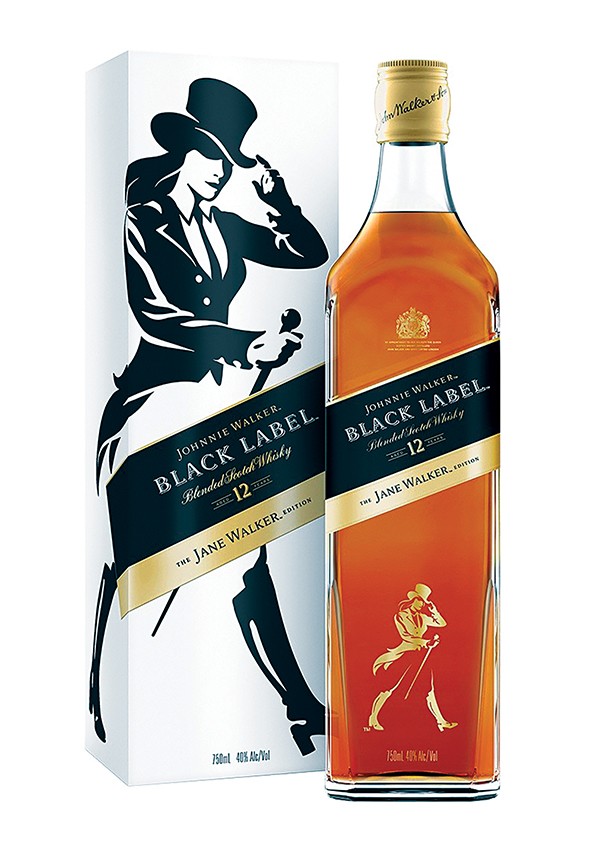I don’t know why I was so irked recently to learn the existence of Jane Walker, the special edition play on the Johnnie Walker Scotch logo, which arrived on store shelves this month.
Jane Walker, which the company describes as a “symbol to represent the fearless women taking steps on behalf of all,” was conceived in honor of Women’s History Month. I consider myself more of a humanist than a feminist, but I initially felt slightly insulted by the idea that women need special products particularly marketed to us.
The top-hatted, equestrian boot-wearing avatar did get me thinking about the myriad ways that alcohol is marketed to the fairer sex. For my generation, it’s probably the guilty pleasure sitcom, Sex and the City, that brought a renaissance of girly drinks to bar menus nationwide. While American women have been drinking in public since Prohibition was repealed in 1933, frou-frou cocktails reached their peak with Carrie Bradshaw and friends’ drink of choice, a pink-hued variation on the classic Cosmopolitan.

These days, women are also the dominant force in the wine market. I stumbled across an article in Fortune that describes the popularity of rosé as a “female-driven movement” with “sharp sales increases that far outpace the broader $38 billion wine industry.” That article led me to a research paper by Liz Thach, Professor of Wine Business and Management at Sonoma State University, who interviewed male and female drinkers to identify their differences in wine consumption. Thach’s consensus, that women are motivated to drink during social activities, while men focus on the technical aspects of wine-drinking, results in at least 10 percent more women than men ordering wine when they choose to drink an alcoholic beverage.
Additionally, more wines are specifically targeted toward women drinkers, with the prevalence of brands like Little Black Dress, Cupcake, and Girls Night Out jockeying for space at your neighborhood liquor store. The cutesy naming trend was apparently established over a decade ago, when VinExpo Bordeaux, the world-renowned wine and spirits exhibition, declared, “Women are the future of wine” as their lead theme of their 2006 conference.
The general vibe is this: If it’s fruity and a little bit sweet, women will drink it. Where does that leave all of the female beer and bourbon drinkers? Well, the truth is, there aren’t too many of them. A 2015 analysis of Twitter datasets revealed that between 14 and 40.6 percent of beer-related hashtag users are female, while 35 to 72.4 percent of wine-related hashtag users are female. When it comes to cocktail-related hashtags used by women, Cosmo reigns supreme, with a 73.5 percent usage compared to Scotch, which comes in at just 27.7. Notes Emma Pierson, researcher at the University of Oxford, “Fruit-flavored cocktail hashtags are female-dominated, while malts and ryes skew male.”
First, I thought it was the marketing that was patronizing to female drinkers. Now, I feel a little depressed about the fact that drinking stereotypes are, in fact, steeped in truth. What’s truly disheartening, though, is the revelation that more women are drinking high amounts of alcohol than ever before. According to a 2017 report called the National Epidemiologic Survey on Alcohol and Related Conditions, high-rise drinking increased at a rate of 4-to-1 for women. What’s contributing to these higher drinking levels? The rising numbers of women in the workforce, cultural norms, stress, and wealth inequality, the survey says.
So let’s drink, but in moderation. And if you’re one of those rare women who enjoy the taste of Scotch, maybe you’ll want to try on Jane Walker for size. With $1 from each bottle produced going to the She Should Run organization and the Monumental Women project, Diageo, the Scotch’s parent company, is doing more than simply patronizing women drinkers.